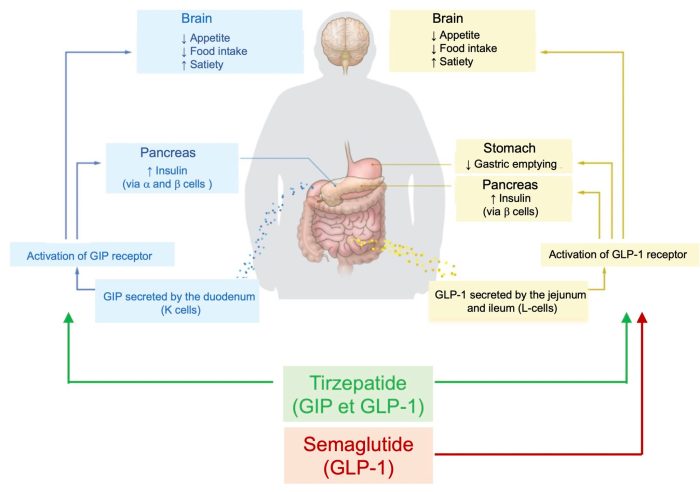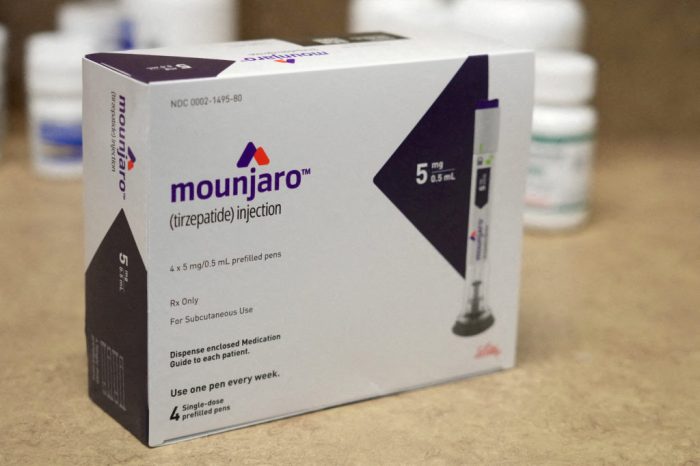
Exploring the impact of Mount Kilimanjaro on Type 2 Diabetes and Obesity unveils a fascinating connection between climbing the mountain and managing these health conditions. The physiological benefits of such physical activity on diabetes and obesity are profound, shedding light on a unique approach to treatment and wellness.
How does Mount Kilimanjaro work for managing Type 2 Diabetes and Obesity?

Climbing Mount Kilimanjaro can be a challenging yet rewarding physical activity that offers numerous benefits for managing Type 2 Diabetes and Obesity. The combination of high altitude and physical exertion involved in climbing the mountain can have a positive impact on these conditions.
Physiological Benefits of Climbing Kilimanjaro
- Increased insulin sensitivity: Regular physical activity such as climbing Kilimanjaro can improve insulin sensitivity, allowing for better regulation of blood sugar levels in individuals with Type 2 Diabetes.
- Weight loss: The intense physical activity involved in climbing the mountain can help individuals with obesity shed excess weight, reducing the risk of obesity-related complications.
- Improved cardiovascular health: Climbing Kilimanjaro requires cardiovascular endurance, which can strengthen the heart and improve overall cardiovascular health.
- Enhanced metabolism: The physical exertion at high altitudes can boost metabolism, aiding in weight loss and better management of diabetes.
Impact of High Altitude and Physical Exertion
- Regulation of blood sugar levels: The combination of high altitude and physical activity can lead to lower blood sugar levels, potentially reducing the need for medication in individuals with Type 2 Diabetes.
- Weight loss: The calorie-burning nature of climbing Kilimanjaro can contribute to weight loss, which is beneficial for individuals with obesity and diabetes.
- Stress reduction: The mental and physical challenges of climbing the mountain can help reduce stress levels, which is important for managing diabetes and obesity.
- Muscle strength and endurance: Climbing Kilimanjaro requires muscular strength and endurance, which can improve overall fitness levels and help manage both conditions.
What are the recommended strategies on Mount Kilimanjaro for individuals with Type 2 Diabetes and Obesity?
To ensure a safe and successful climb up Mount Kilimanjaro for individuals with Type 2 Diabetes and Obesity, specific strategies need to be implemented. These include following dietary guidelines, staying hydrated, and incorporating suitable training regimens.
Dietary Guidelines and Meal Planning
- Aim for a balanced diet rich in complex carbohydrates, lean proteins, and healthy fats to provide sustained energy throughout the climb.
- Avoid high-sugar and processed foods that can cause blood sugar spikes and disrupt insulin levels.
- Plan meals with portion control in mind to manage weight and blood glucose levels effectively.
- Consider carrying snacks like nuts, seeds, and fruits for quick energy boosts during the climb.
Importance of Hydration
Maintaining proper hydration is crucial for managing Type 2 Diabetes and Obesity during the climb. Dehydration can lead to fluctuations in blood sugar levels and hinder weight management efforts. Climbers should:
- Drink plenty of water throughout the day to prevent dehydration and support metabolic functions.
- Avoid sugary beverages and opt for water or electrolyte-rich drinks to stay hydrated.
- Monitor urine color to ensure adequate hydration levels are maintained.
Training Regimen and Fitness Routines
- Engage in regular cardiovascular exercises like walking, cycling, or swimming to improve endurance and stamina for the climb.
- Incorporate strength training exercises to build muscle mass and support weight management goals.
- Consult with a healthcare provider or fitness expert to create a customized training plan that considers individual health conditions.
How does the environment on Mount Kilimanjaro influence the management of Type 2 Diabetes and Obesity?

The environment on Mount Kilimanjaro plays a significant role in the management of Type 2 Diabetes and Obesity. Factors such as altitude, temperature, terrain, stress management, and mental well-being all impact how individuals with these conditions navigate their health while climbing the mountain.
Impact of Altitude, Temperature, and Terrain
Altitude poses a unique challenge for individuals with Type 2 Diabetes and Obesity as it can affect blood sugar control. The reduced oxygen levels at higher altitudes can lead to changes in metabolism and insulin sensitivity, requiring careful monitoring of blood sugar levels.
Additionally, extreme temperatures on Kilimanjaro can impact hydration and energy levels, influencing weight management strategies. The rugged terrain can also pose physical challenges, making it essential for climbers to adapt their exercise routines and dietary plans accordingly.
Challenges of the Mountain Environment
The harsh conditions on Mount Kilimanjaro can exacerbate the symptoms of Type 2 Diabetes and Obesity. High altitude can increase the risk of hypoglycemia or hyperglycemia, requiring climbers to be vigilant about managing their condition. The mental stress of climbing such a challenging peak can also impact blood sugar levels and eating habits, emphasizing the importance of stress management techniques for overall health.
Role of Stress Management and Mental Well-being
Stress management and mental well-being are crucial components of managing Type 2 Diabetes and Obesity while climbing Mount Kilimanjaro. The psychological stress of the climb can affect hormone levels and blood sugar regulation, making it essential for climbers to practice mindfulness, meditation, or other relaxation techniques.
Prioritizing mental health can improve overall outcomes for individuals with these conditions, enabling them to better cope with the physical demands of the mountain environment.
What precautions should individuals with Type 2 Diabetes and Obesity take when considering climbing Mount Kilimanjaro?
When individuals with Type 2 Diabetes and Obesity plan to climb Mount Kilimanjaro, there are several crucial precautions they need to consider to ensure their safety and well-being during the ascent.
Medical Considerations and Safety Measures
- Consulting Healthcare Professionals: It is essential for individuals with Type 2 Diabetes and Obesity to consult with their healthcare team before attempting to climb Mount Kilimanjaro. They should obtain necessary clearances and guidance to ensure they are physically fit for the challenge.
- Continuous Monitoring of Blood Sugar Levels: Regular monitoring of blood sugar levels is vital during the climb. Individuals should carry glucose monitoring devices and supplies to check their levels frequently and make necessary adjustments to their treatment plan.
- Signs of Hypoglycemia or Hyperglycemia: It is crucial for climbers to be aware of the signs and symptoms of hypoglycemia (low blood sugar) and hyperglycemia (high blood sugar) and take immediate action if they experience any of these conditions.
- Pack Adequate Medications and Supplies: Climbers should ensure they have an ample supply of medications, insulin, glucose tablets, and other necessary supplies to manage their condition effectively throughout the climb.
- Stay Hydrated and Maintain Balanced Nutrition: Proper hydration and nutrition are essential for individuals with Type 2 Diabetes and Obesity. Climbers should stay hydrated, eat balanced meals, and carry snacks to regulate their blood sugar levels and energy levels during the ascent.
- Acclimatization and Rest: Adequate rest and acclimatization are crucial for climbers with Type 2 Diabetes and Obesity to prevent complications such as altitude sickness. It is important to listen to your body, take breaks when needed, and follow a gradual ascent to allow your body to adjust to the altitude.
Conclusion

In conclusion, the journey of climbing Mount Kilimanjaro not only offers a physical challenge but also serves as a transformative experience for individuals dealing with Type 2 Diabetes and Obesity. The combination of altitude, exertion, and environmental factors provides a holistic approach to managing these conditions and promoting overall well-being.
FAQ Compilation
What safety precautions should individuals with Type 2 Diabetes and Obesity take before climbing Mount Kilimanjaro?
Prior to embarking on the climb, individuals should ensure they have medical clearance, monitor blood sugar levels regularly, and be aware of signs of hypoglycemia or hyperglycemia. It’s crucial to consult healthcare professionals for guidance.
How does the mountain environment affect blood sugar control and weight management for individuals with Type 2 Diabetes and Obesity?
The altitude, temperature, and terrain on Mount Kilimanjaro can impact blood sugar levels and weight management. Managing these conditions in such a unique environment requires careful planning and adaptation to the challenges presented.
What dietary guidelines should climbers with Type 2 Diabetes and Obesity follow on Mount Kilimanjaro?
Climbers should adhere to a balanced diet rich in nutrients, focusing on proper meal planning and hydration. Maintaining stable blood sugar levels and supporting overall health through nutrition is crucial during the climb.













